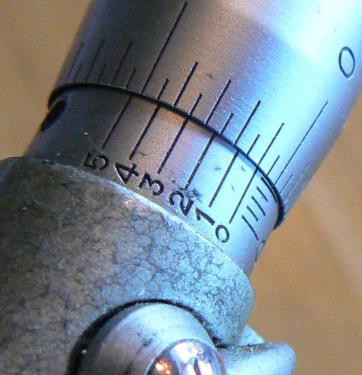(03-28-2018, 11:19 PM)f350ca Wrote: Just how many baby's have to be squeezed to fill that bottle Randy?
Well, it's just a teeny little bottle

and doesn't have to be re-filled often.
The deviation on my chart was in millionths of an inch. Since my capability for measurement is only .0001 up to four inches, I concluded that my gauge blocks didn't reflect the same deviations on the test data sheet by measuring the largest +/- deviations recorded on the test data sheet to see if the
direction of my measurement was higher or lower, regardless of the actual measurement.
(ncidentally, the numbers on Greg's sheet are W-A-Y better than what I recall seeing on mine - I can't remember more than a half-dozen blocks with numbers in the single digits. I'm looking at mine now and the wooden container is marked "Grade B" perhaps Greg has a higher quality set ? (I do recall that mine was not expensive - I'm thinking less than $70, or slightly less than $1 USD per block.)
When I googled grade B gauge blocks it seems that they no longer exist, the definition was changed in 1975. I found a couple of references to problems with cal labs because of the "grade B" markings. A reasonable error suggested for grade B blocks was +/- 50 millionths. My set wouldn't meet that requirement, although it wouldn't be too far off.
As an example of comparing to the test data sheet, if the TDS indicated a
negative deviation of 18 millionths and my tenths micrometer indicated a
positive deviation, that would be suspicious. Although I couldn't measure 18 millionths, I could determine whether the deviation was positive or negative for many (most?) two-digit numbers.
I tried to take a good photo of this example using a .1003 gauge block. The parallax error makes it more difficult to see what I mean but the vernier reading is obviously less than .0004 and just slightly greater than .0003. If the test data sheet calls this -18 millionths, I would call it a bogus number.

When the measured deviation trend is the opposite of the data sheet in significant samples, measured with two micrometers, then it's suspicious. I also found several blocks that the data sheet indicated deviated by almost 75, a magnitude that I could sort-of-measure with my micrometers. (I used both an old Mitutoyo and a new Chinese copy which has proven accurate so far.)
This is not to say that I was at any time tempted to toss the set in the garbage, LOL. If I can't accurately measure the error, then they are more than accurate enough for me.
I've read about the vaseline treatment before - seems like a good idea since it wouldn't rub off as readily as oil when the blocks rattle around in their container.
I live 1/2 mile from the ocean and humidity is high. After seeing that little blotch on my .8000 gauge block I decided to keep the gauge block set and the angle block set indoors from now on. Reading this thread prompted me to bring the blocks inside for cleaning/lubing - had I not done that, no telling what they would have looked like the next time that I actually needed one !





![[Image: TomsTechLogo-Profile.png]](http://tomstechniques.com/wp-content/uploads/2013/11/TomsTechLogo-Profile.png)
 and doesn't have to be re-filled often.
and doesn't have to be re-filled often.